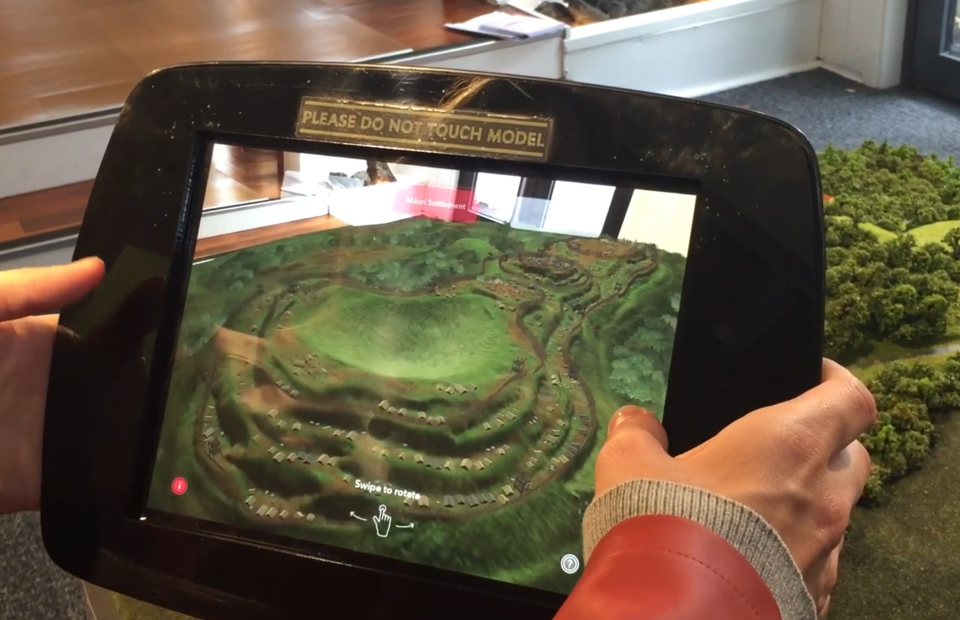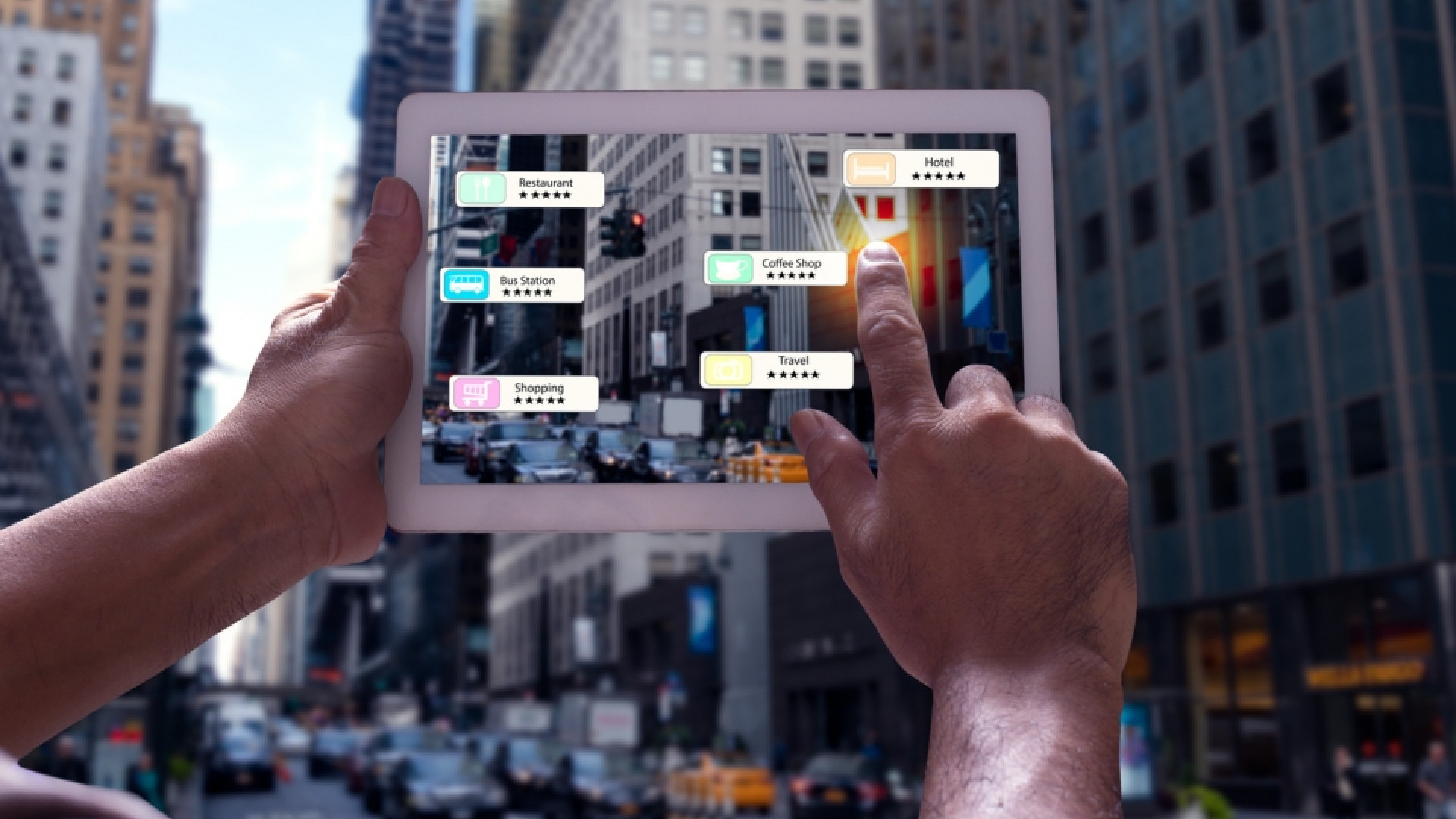By now you've heard about Augmented Reality (AR), but are still really confused about what it all means. What makes it different from VR? Are there different kinds and do I need a device, goggles, 3D glasses or something else to experience it? Read on to have all your questions answered and to find out AR’s potential for your business.
For many the altering of reality, with holograms, interactive displays and 3D projections, is still the stuff of science-fiction. The truth is that all these things already exist and are playing an ever bigger role in our life experiences. As AR capability is being built into our devices (by default), its technology is set to dominate more of our daily lives. This ongoing advancement means delivering AR experiences to customers, prospects, employees and other stakeholders is becoming more affordable and accessible for business. And that’s exactly why you need to get your head around the basics of AR as a business opportunity.
A quick breakdown to start with.
Before we explore more of the stuff within AR, it’s best we break a few things down and address some of the confusion that currently exists around what-is-what. There are typically three approaches that come under the umbrella term of eXtended Reality (XR):
- AR (Augmented Reality): This is where your content appears over real-world views, usually in the form of digital images and sounds. Often this is experienced through your smartphone.
- VR (Virtual Reality): This is where you deliver fully immersive experiences in an artificial world. Typically this sort of content is delivered via headsets.
- MR (Mixed Reality): This is where content combines both AR and VR elements so digital objects can interact with the real world. Again, a range of specialist headsets allow for these types of engagement
Although this article is about AR, it’s important to understand the family of differing approaches this experience belongs to.
So, what is AR?
As indicated, Augmented Reality is the approach that expands the real world by adding layers of digital information onto it. It does not create an artificial world but enhances an existing real environment by adding digital sounds, videos and graphics to it. If you’ve ever tried to catch a Pokemon, virtually move furniture around a room (via an app) or used a QR code to activate a video, sound or animation then you’ve probably already experienced AR.
How does AR work?
This is probably more technical than most really need to know, but the short story is that AR overlays data (images, animations, videos, 3D models), via a range of devices (more on this later), to add computer effects to a real world setting. This is achieved via a combination of elements such as:
- Cameras and sensors. These collect data about a user's interactions and send it for processing. Cameras on devices scan the surroundings to locate physical objects and generating 3D models.
- Processing. AR devices act like computers, requiring a CPU, a GPU, flash memory, RAM, Bluetooth and/or WiFi, a GPS, etc. to be able to measure speed, angle, direction, orientation in space, and so on.
There are other elements, like projection and reflection, which are also core to many AR experiences but they need a more complex explanation so we’ll leave these for another time.
What types of AR are there?
The two most common AR types are marker-based or marker-less:
- Marker-based AR: This requires a special visual object and a camera to scan it. It may be anything from a printed QR code to a designed symbol or icon. The AR device uses the marker to know it needs to start the digital experience.
- Marker-less AR: Can also be referred to as location-based or position-based AR, marker-less uses GPS, a gyroscope, a compass, and/or an accelerometer to provide data based on a user's location. This data can determine what AR content you get in a certain location. With the widespread availability of smartphones, this type of AR can be used to produce maps or directions, nearby businesses' info or additional supporting content like words, numbers and video.
Other AR types include projection-based (typically 3D projections on to a mapped out surface) and super-imposition-based (using object recognition to replace part or whole objects).
What devices are used?
Many devices, from smartphones and tablets to gadgets like Google Glass, support AR. These generally fall into these categories:
- Mobile handheld devices (smartphones and tablets) – the most available and best fit for AR mobile apps, across gaming, entertainment, business analytics, sports, social networking and more.
- Special AR devices, designed specifically for AR experiences, such as head-up displays (HUD), that send data to a display directly in the user's view. Such devices already have applications in aviation, automotive industry, manufacturing, sports and other areas.
- AR glasses (or smart glasses) like Google Glasses, Hololens, Laster See-Thru and others. These display data from your smartphone or tablet, allowing hands-free access to content. We see a great example of this technology driving business improvement with Boeing’s assembly lines.
Device technologies continue to evolve. Samsung and Sony are developing AR contact (smart) lenses and Virtual Retinal Displays (VRD) are also in development, creating images by projecting laser light directly into the human eye.
What are the possible business applications of AR?
AR business applications are growing at a rapid rate. These include:
- Retail - driving better customer engagement, retention, brand awareness and sales. Some features help customers make wiser and quicker purchases, liking providing product data with 3D models of different sizes or colours.
- Real-estate such as 3D tours of apartments and houses that haven’t been built yet, allowing potential purchasers to visualise themselves in them and make design decisions.
- Education and training with interactive models for learning, from mathematics and chemistry right through to simulating real life work situations.
- Medicine and healthcare to help diagnose, monitor, and train.
- Military for advanced navigation and real time data.
- Tourism, with data on destinations, navigation, and directions.
- Broadcasting, to enhance live events and event streaming with overlayed content.
- Industrial design, allowing the visualisation and modelling of potential solutions.
Why we love AR so much?
As a strategic communications agency that works across both physical and digital mediums, we’ve really embraced AR as a tool to help our clients communicate more effectively with their existing and potential customers, with their staff and with the wider community. In all cases, our goal is to build engagement, grow perception, and to drive actions that align with our clients’ objectives. Here’s why we think it’s so effective:
- AR is multi-sensory, making it particularly effective in driving engagement, recall and association.
- Brands are formed from people’s experiences and AR experiences are rich and immersive, helping drive positive associations with your brand.
- One of the key challenges for business is getting audiences to make multiple contacts across their sales, social, web and other touchpoints. AR has the potential to bring many of these together in one experience.
- Finally, AR is cool and interesting. Therefore it has a curiosity factor that will make audiences want to try it. They engage with you when otherwise they may not have.
And as AR technology advances and becomes even more accessible, we see the business benefits and possibilities continuing to escalate.


